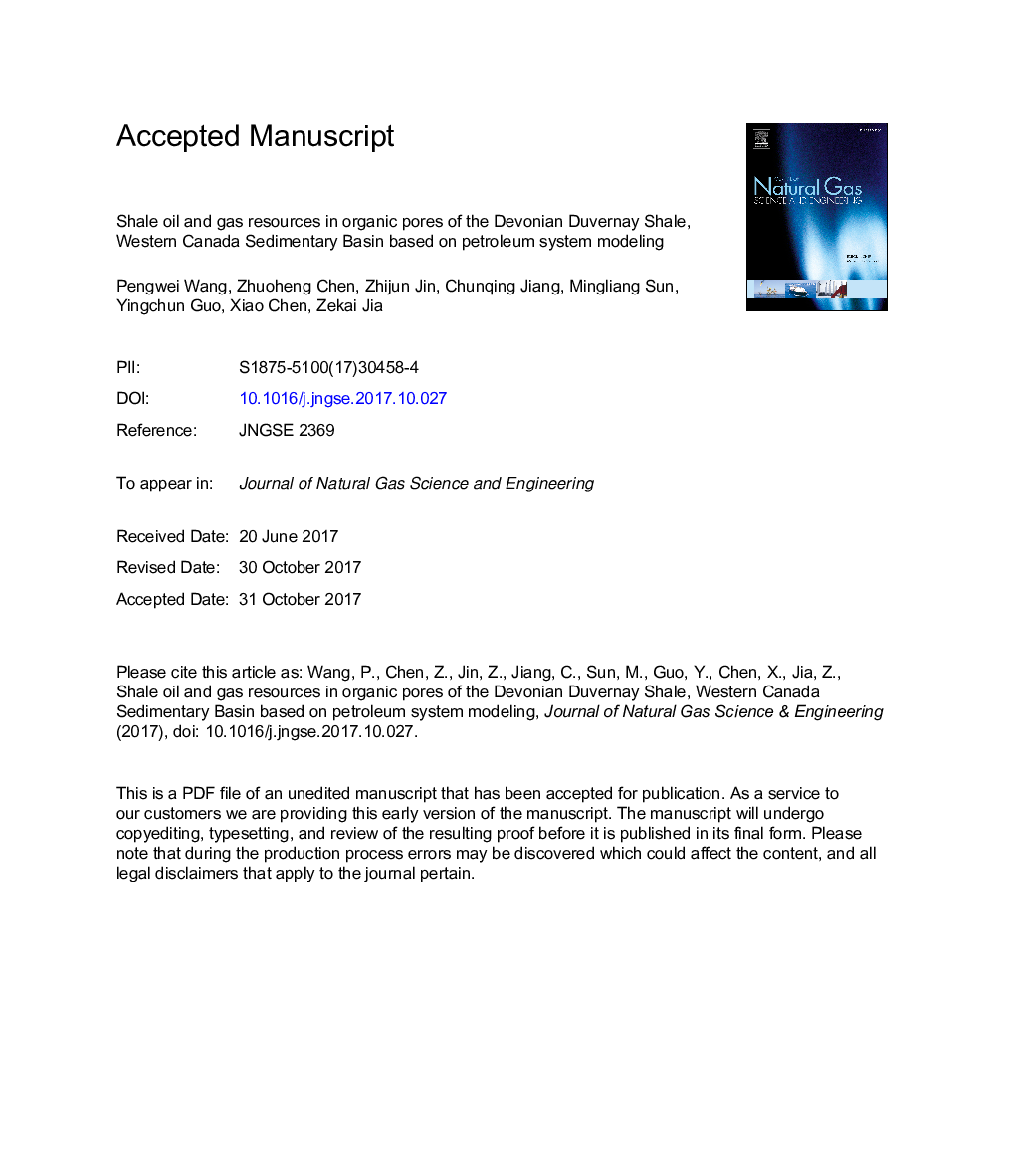| Article ID | Journal | Published Year | Pages | File Type |
|---|---|---|---|---|
| 8128371 | Journal of Natural Gas Science and Engineering | 2018 | 46 Pages |
Abstract
Shale-hosted hydrocarbons is regarded as an important unconventional resource around the world. So far, huge emphasis has been put on the contribution of organic pores to self-source and self-reservoir hydrocarbon systems. This study systemically reveals the contribution of organic pores to hydrocarbon potential in the Duvernay Shale through restoring thermal maturity evolution, modeling hydrocarbon generation and expulsion in the Duvernay Formation, analyzing absorption capacity variation with TOC and modeled pore pressure, determining free-gas storage capacity with calculated organic porosity and correction of adsorbed gas, and calculating in-place shale oil and gas volumes with volumetric method. The Duvernay Shale reached “oil window” and “gas window” about 70-80 Ma and 50 Ma ago, respectively. Significant hydrocarbon generation (20% TR) began and terminated (95% TR) at Ro of 0.65% and 1.85%, respectively. Gas generation rates increased dramatically from Ro of 1.1%, while the instantaneous HC1-4 expulsion reached peak at Ro of 1.66%, the difference between which indicates considerable retained gas resource in Duvernay Shale. The gas storage capacity, including absorption capacity and free gas capacity, varies significantly in the Duvernay Shale, specifically, the former rangs from 8 to 30scf/ton, and the latter from 40 to 140scf/ton. The estimated median value of total in-place natural gas (GIP) and in-place oil resource (OIP) in organic pores of Duvernay shale are 404.8 TCF and 81420 MMbbl, respectively. Thus, the organic porosity is one of the keys to make the Duvernay Shale a successful play.
Related Topics
Physical Sciences and Engineering
Earth and Planetary Sciences
Earth and Planetary Sciences (General)
Authors
Pengwei Wang, Zhuoheng Chen, Zhijun Jin, Chunqing Jiang, Mingliang Sun, Yingchun Guo, Xiao Chen, Zekai Jia,
